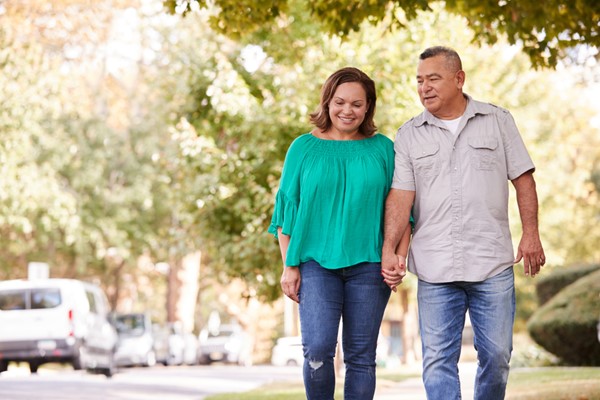
Trying to understand what that home description is all about? Whether you're new to the housing market or newly returned, you'll find terms used to describe homes that you might not recognize. Or, you may not understand what they truly mean in context. The word walkable, for instance, shouldn't apply to a home at all, should it? After all, houses can't just get up and walk away.
Defining the real [estate] meaning
In real estate and urban parlance, a walkable neighborhood might refer to a community where services such as grocery and other shops, restaurants, bars, parks, and other recreation areas are reachable on foot within a 10-to-15 minute timeframe.
In another area, walkable might mean that public transportation to urban areas is within walking distance. In this case, the neighborhood itself may not hold the services but does support its being in reach via bus or train access.
Still, other definitions of walkable mean that the community has lighted footpaths, sidewalks, urban (or suburban) trails and other means by which residents may walk for exercise or recreation. Or, that the community provides opportunities and programs for residents to walk.
Breaking down “walkable” themes
With all the various definitions in use, a Harvard study published these themes as most important to walkability.
Environmental dimensions adding to walkability:
- Traversable: environments with the physical conditions—sidewalks, trails, footpaths—to allow traverse from one place to another without difficulty.
- Compact: where the distance between places is relatively short.
- Safe: lower crime rates, lighted pathways, marked and controlled crosswalks, and additional safety features add to the safe walkability of a neighborhood.
- Physically enticing: settings with full accessibility to pedestrians that include landscaping, signage, benches, shade trees, pathways, street lights, and views.
Outcome dimensions of walkability
- Social: a location with lively shopping and dining areas, typically mixed-use live/work situations and the friendly people that live, work, or visit there.
- Transportation: is the perception that both social equality (age, income, disability) and environmental preservation are sustainable via public transit.
- Exercise-inducing: forced exercise due to proximity to work, transportation, or services, or the lack of suitable parking that goes with living in a more urban area.
Designing for walkability
- Measurable: the neighborhood design or redevelopment includes walkability as a quantifiable outcome based on specific indicators.
- Holistic: in this case, walkability references communities of improved urban living with slower pace built in, scaled for human health and happiness, devised to promote interaction.
None of these is definitive, but if you’re looking for a neighborhood that defines “walkable” for you, check the walk score website, which measures over 100 aspects of walkability, and talk to your local real estate professional about what works for you.
About the Author

Beth Belloise
Tropical Life Realty would love to assist you. Whether you're buying or selling, at the beginning of your real estate search or you know exactly what you're looking for, you'll benefit from having a real estate professional by your side. Call us today and put our team to work for you!
